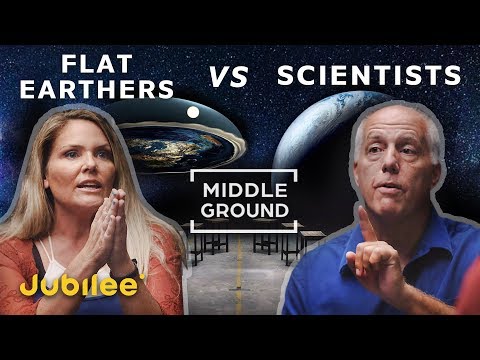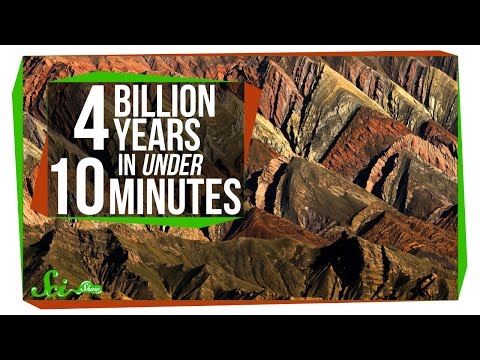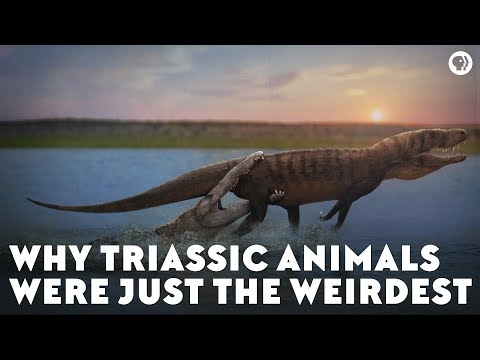3.1: Earth as a Planetary Body
- Page ID
- 20758
\( \newcommand{\vecs}[1]{\overset { \scriptstyle \rightharpoonup} {\mathbf{#1}} } \)
\( \newcommand{\vecd}[1]{\overset{-\!-\!\rightharpoonup}{\vphantom{a}\smash {#1}}} \)
\( \newcommand{\id}{\mathrm{id}}\) \( \newcommand{\Span}{\mathrm{span}}\)
( \newcommand{\kernel}{\mathrm{null}\,}\) \( \newcommand{\range}{\mathrm{range}\,}\)
\( \newcommand{\RealPart}{\mathrm{Re}}\) \( \newcommand{\ImaginaryPart}{\mathrm{Im}}\)
\( \newcommand{\Argument}{\mathrm{Arg}}\) \( \newcommand{\norm}[1]{\| #1 \|}\)
\( \newcommand{\inner}[2]{\langle #1, #2 \rangle}\)
\( \newcommand{\Span}{\mathrm{span}}\)
\( \newcommand{\id}{\mathrm{id}}\)
\( \newcommand{\Span}{\mathrm{span}}\)
\( \newcommand{\kernel}{\mathrm{null}\,}\)
\( \newcommand{\range}{\mathrm{range}\,}\)
\( \newcommand{\RealPart}{\mathrm{Re}}\)
\( \newcommand{\ImaginaryPart}{\mathrm{Im}}\)
\( \newcommand{\Argument}{\mathrm{Arg}}\)
\( \newcommand{\norm}[1]{\| #1 \|}\)
\( \newcommand{\inner}[2]{\langle #1, #2 \rangle}\)
\( \newcommand{\Span}{\mathrm{span}}\) \( \newcommand{\AA}{\unicode[.8,0]{x212B}}\)
\( \newcommand{\vectorA}[1]{\vec{#1}} % arrow\)
\( \newcommand{\vectorAt}[1]{\vec{\text{#1}}} % arrow\)
\( \newcommand{\vectorB}[1]{\overset { \scriptstyle \rightharpoonup} {\mathbf{#1}} } \)
\( \newcommand{\vectorC}[1]{\textbf{#1}} \)
\( \newcommand{\vectorD}[1]{\overrightarrow{#1}} \)
\( \newcommand{\vectorDt}[1]{\overrightarrow{\text{#1}}} \)
\( \newcommand{\vectE}[1]{\overset{-\!-\!\rightharpoonup}{\vphantom{a}\smash{\mathbf {#1}}}} \)
\( \newcommand{\vecs}[1]{\overset { \scriptstyle \rightharpoonup} {\mathbf{#1}} } \)
\( \newcommand{\vecd}[1]{\overset{-\!-\!\rightharpoonup}{\vphantom{a}\smash {#1}}} \)
Earth as a Planetary Body
Earth is a terrestrial planet in the solar system, and it is like the other inner planets, at least in its size, shape, and composition. However, many features make Earth vastly different from the planets and any other planet that we know of so far.
Earth is a sphere or, more correctly, an oblate spheroid, which is a sphere that is a bit squished down at the poles and bulges a bit at the equator. Alternatively, to be more technical, the minor axis (the diameter through the poles) is smaller than the major axis (the diameter through the equator). When the earth is cut into equal halves, each half is called a hemisphere. North of the equator in the northern hemisphere and south of the equator in the southern hemisphere. Eastern and western hemispheres are also designated.
Even the ancient Greeks knew that Earth was round by observing the arc shape of the shadow on the Moon during a lunar eclipse. The Sun and the other planets of the solar system are also spherical. Larger satellites, those that have enough mass for their gravitational attraction to have made them round, are as well.
Earth has a magnetic field that behaves as if the planet had a gigantic bar magnet inside of it. Earth’s magnetic field also has a north and south pole and a magnetic field that surrounds it. The magnetic field arises from the convection of molten iron and nickel metal in Earth’s outer liquid iron core. Earth’s magnetic field extends several thousand kilometers into space. The magnetic field shields the planet from harmful radiation from the Sun.
Earth’s Rotation
Imagine a line passing through the center of Earth that goes through both the North Pole and the South Pole. This imaginary line is called an axis. Earth spins around its axis, just as a top spins around its spindle. This spinning movement is called the Earth’s rotation. While the Earth spins on its axis, it also orbits or revolves around the Sun, called a revolution.
A pendulum set in motion will not change its motion, and so the direction of its swinging should not change. However, Foucault observed that his pendulum did seem to change direction. Since he knew that the pendulum could not change its motion, he concluded that the Earth, underneath the pendulum, was moving. An observer in space will see that Earth requires 23 hours, 56 minutes, and 4 seconds to make one complete rotation on its axis. However, because Earth moves around the Sun at the same time as rotating, the planet must turn just a bit more to reach the same place relative to the Sun. Hence the length of a day on Earth is 24 hours. At the equator, the Earth rotates at a speed of about 1,700 km per hour, but at the poles, the movement speed is nearly nothing.

Earth’s Revolution
For Earth to make one complete revolution around the Sun takes 365.24 days. This amount of time is the definition of one year. The gravitational pull of the Sun keeps Earth and the other planets in orbit around the star. Like the other planets, Earth’s orbital path is an ellipse, so the planet is sometimes farther away from the Sun than at other times. The closest Earth gets to the Sun each year is at perihelion (147 million km) on about January 3, and the furthest is at aphelion (152 million km) on July 4. Earth’s elliptical orbit has nothing to do with Earth’s seasons.
During one revolution around the Sun, Earth travels at an average distance of about 150 million km. Earth revolves around the Sun at an average speed of about 27 km (17 mi) per second, but the speed is not constant. The planet moves slower when it is at aphelion and faster when it is at perihelion.
Seasons
The reason the Earth has seasons is that Earth is tilted 23.5 degrees on its axis, along with Earth’s daily rotation and annual revolution around the sun. During the Northern Hemisphere summer, the North Pole points toward the Sun, and in the Northern Hemisphere winter, the North Pole has tilted away from the Sun.

The Tropic of Cancer is the parallel at 23.5 degrees north of the equator, which is the most northerly place on Earth, receiving direct sunlight during the Northern Hemisphere’s summer. Remember that the earth is tilted 23.5 degrees, which accounts for seasonal variations in climate. The Tropic of Capricorn is the parallel at 23.5 degrees south of the equator and is the most southerly location on Earth, receiving direct sunlight during the Southern Hemisphere’s summer.
The tropics (Cancer and Capricorn) are the two imaginary lines directly above which the sun shines on the two solstices, which occur on or near June 20 or 21 (summer solstice in the Northern Hemisphere) and December 21 or 22 (winter solstice in the Northern Hemisphere). The sun is directly above the Tropic of Cancer at noon on June 20 or 21, marking the beginning of summer in the Northern Hemisphere and the beginning of winter in the Southern Hemisphere. The sun is directly above the Tropic of Capricorn at noon on December 21 or 22, marking the beginning of winter in the Northern Hemisphere and the beginning of summer in the Southern Hemisphere. Solstices are the extreme ends of the seasons, when the line of direct sunlight is either the farthest north or the farthest south that it ever goes. The region between the Tropics of Cancer and Capricorn is known as the tropics. This area does not experience dramatic seasonal changes because the amount of direct sunlight received does not vary widely. The higher latitudes (north of the Tropic of Cancer and south of the Tropic of Capricorn) experience significant seasonal variation in climate.
The Arctic Circle is a line of latitude at 66.5 degrees north. It is the farthest point north that receives sunlight during its winter season (90 N − 23.5 = 66.5 N). During winter, the North Pole is away from the sun and does not receive much sunlight. At times, it is dark for most of the twenty-four-hour day. During the Northern Hemisphere’s summer, the North Pole faces more toward the sun and may receive sunlight for more extended portions of the 24-hour day. The Antarctic Circle is the corresponding line of latitude at 66.5 degrees south. It is the farthest location south that receives sunlight during the winter season in the Southern Hemisphere (90 S − 23.5 = 66.5 S). When it is winter in the north, it is summer in the south.
The Arctic and Antarctic Circles mark the extremities (southern and northern, respectively) of the polar day (twenty-four-hour sunlit day) and the polar night (24-hour sunless night). North of the Arctic Circle, the sun is above the horizon for twenty-four continuous hours at least once per year and below the horizon for twenty-four continuous hours per year. This is true also near the Antarctic Circle, but it occurs south of the Antarctic Circle, toward the South Pole. Equinoxes, when the line of direct sunlight hits the equator and days and nights are of equal length, occur in the spring and fall on or around March 20 or 21 and September 22 or 23.
Geologic Time and Deep Time
In 1788, after many years of geological study, James Hutton, one of the early pioneers of geology, wrote the following about the age of the Earth: “The result, therefore, of our present inquiry is, that we find no vestige of a beginning, — no prospect of an end.” Although he was not precisely correct (there was a beginning and an end to planet Earth), he was trying to express the vastness of geological time that humans have a hard time perceiving. Although Hutton did not assign an age to the Earth, he was the first to suggest that the planet was incredibly old. Today we know Earth is approximately 4.6 billion years old, an age first calculated by Caltech professor Clair Patterson in 1956 by radiometrically dating meteorites with uranium-lead dating. (Earle, 2015)

On a geologic scale, the lifespan of a human is truly short, and we struggle to comprehend the depth of geologic time and slow geologic processes. Studying geologic time, also known as deeptime, can help us overcome our limited view of Earth during our lifetime. For example, the science of earthquakes only goes back about 100 years; however, geologic evidence shows that large earthquakes have occurred in the past and will continue to occur in the future. Thus, the human perspective of time does not always overlap with geologic timescales.
A diagram above is of geological time. The largest division of time is the Eon—Hadean, Archean, Proterozoic (sometimes combined as the Precambrian), and Phanerozoic. Although life appeared more than 3,800 million years ago (Ma), during most of Earth’s history, from 3,500 Ma to 542 Ma (88 percent of geologic time), life forms consisted mainly of simple single-celled organisms such as bacteria. Only in more recent geologic time have more biologically complex organisms appeared in the geologic record.
The Phanerozoic Eon, the last 542 million years, is only 12 percent of geological time and is named for the time during which visible (phaneros-) life (-zoic), i.e., abundant fossils, appeared in the geological record. Although simple life forms had been around for billions of years, the Phanerozoic marks the beginning of abundant multicellular animals having preservable hard parts such as shells. Animals have been on land for only 360 million years, or 8 percent of geological time. Mammals have dominated since the demise of the dinosaurs around 65 Ma, or 1.5 percent of geological time, and the genus Homo has existed since approximately 2.2 Ma, or 0.05 percent of geological time. (1 Understanding Science – An Introduction to Geology, n.d.)
Additionally, the Phanerozoic is divided into three Eras: Paleozoic, Mesozoic, and Cenozoic. Life of the Paleozoic (meaning “ancient life”) consisted of invertebrate animals, fish, amphibians, and reptiles. The Mesozoic (meaning “middle life”) is known as the Age of Rep-tiles popularized by the dominance of dinosaurs, which evolved into birds, and Cenozoic (meaning “new life”) is the Age of Mammals in which mammals evolved to be the dominant form of animal life on land following the mass extinction of the dinosaurs and other apex predator reptiles at the end of the Mesozoic. Early humans (hominids) appear in the rock record only during the last few million years of the Cenozoic.
Evolution of Life on Earth
Scientists believe that life on earth started relatively early, within the first few billion years. During that time, simple life formed and evolved into more complex lifeforms. During the Paleozoic era, a mass extinction event called The Great Dying occurred. However, following that dramatic event, life became more diversified, including the evolution of the dinosaurs.













